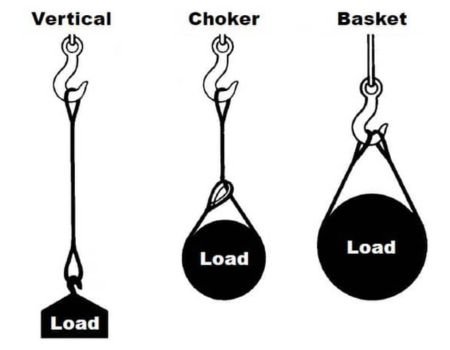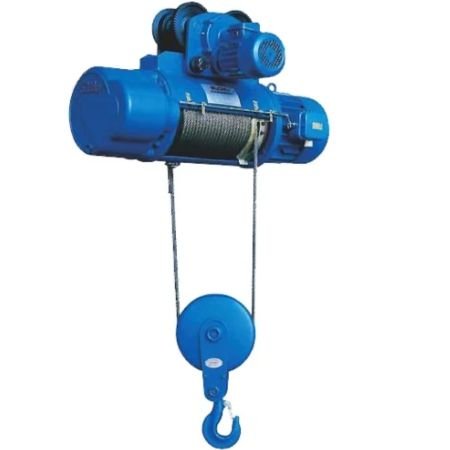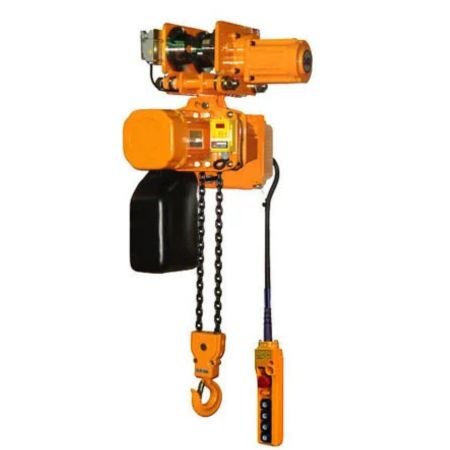Wire Ropes and chains can be seen used in different applications.
You can use the accessories in many industries such as manufacturing, construction, maritime, and mining operations.
This article discusses what they are, their benefits, similarities, differences, and more. Read on.
What is a Wire Rope?
Wire Ropes are ropes made from the twisting or curling of many metal wires together. When twisted together, they form a strong or sturdy strand.
These strands are curled or twisted again around each other into several knots (helix fashion). After these knots are made, the strands are then wrapped around a fibrous central core.
Usually, this ends up forming a stable and strong finished product. These ropes are made mainly from stainless steel.

What is a Chain?
Chains are made mainly from zinc or steel-plated chain metals. They work almost the same as ropes. The only difference is that chains feature individual chains brought together through hooks that come with safety catches or interlocking links.

Benefits of Wire Ropes vs Chains
The benefits of Wire Rope vs Chains are stated below;
- Construction
Wire ropes are made of multiple wires and strands brought together whereas chains are made of a single curved metal.
- Continuous use.
Wire ropes can still be used when one strand breaks while chains will need to be replaced before continuous use if one chain in the link gets broken.
- Ease to move
Wire ropes are ideal to use in installations that are more permanent and can be moved around when needed. Chains come with more flexibility and are perfect for less permanent applications. This makes it easier for them to be moved around compared to wire ropes.
Similarities between Wire Ropes and Chain
Even as you weigh options between wire ropes and chains, here are some common elements these accessories share in common:
- Both of them can be manually operated.
- They can be found in different heights.
- They are both easy to maintain and can last long.
- Both can be accessed with ease.
- Wire Rope and chains come with electric models too.
Differences between Chain and Wire Ropes
On the other hand, certain variables distinguish chains from worn ropes. Therefore, even if you using either wire ropes or chains, there are a few things to know:
Lifting Method
Chains are mostly lifted by movement over sprockets. This means that anything the chain lifts moves upwards and has no lateral movement. On the other hand, wire rope lifts and lower through winding or unwinding on drum length.

Weight
Chains are larger compared to wire rope. Due to this chains are heavier and take more storage space. Also, moving chains can cost more compared to moving wire ropes.
Repair
Repairing chains are easier and cost less than repairing wire ropes.
Inspection
Inspecting chains for damage is simple and proof tests following repairs are easy too. However, spotting out damage to wire ropes is quite difficult.
High-temperature Environment Use
The chain works perfectly in environments with high-temperature compared to wire ropes. However, this depends more on the chain material and grade.
Best Material for Wire Rope vs Chain
The best material for wire ropes includes galvanized and stainless steel while for chains is zinc and steel metals.
Comparing Features of Wire Rope and Chain
Let’s compare some of the critical features between wire rope and chains
Strength
Wire rope have much strength compared to chains. Also, they can withstand heavy loads as well as high stresses. This is due to how wire ropes are made. Chains due to the way they are made can experience wear easily.
Flexible Nature
Wire ropes have more flexibility compared to chains. This allows them to bend and wrap very easily around obstacles. So, for use in spaces that are tight or irregular shapes, wire ropes are ideal.
Simplicity in Use
Wire ropes are easy to splice and adjust compared to chains. Therefore, you can easily tailor them to your unique specifications.
Wear and Tear
Chains come with higher tendencies where wear and tear is concerned than wire ropes. This is due to their makeup which is interlocking links. Over some time, these links become bent or worn. This weakens the chain and makes it hard for it to be used.
Also, chains get corroded over a period. On the other hand, wire ropes do not wear and tear with ease. You can easily maintain them to increase service lifespan.
Injuries
Wire Ropes come with less likeliness to cause injuries compared to chains. Some of the injuries that chains can lead to include back injuries, finger injuries, etc. These injuries take place because chains come with some level of difficulty in maneuvering.
Cost or Budget
Chains cost less in price compared to wire rope when purchased. However, due to how easily chains wear and tear after a short time, using them ends up costing more and comes with higher risks compared to wire ropes. Since wire ropes are easy to maintain and last long, the return on investment is higher and clearer.
Comparing Applications of Wire Rope to Chain
There are many ways and areas you can use wire rope or chains. Some of the most common ways include:
Mounting Options
If a bridge crane has been set up already on the premises of the business, chains are easy to install. Or else, an accurate mounting configuration is required if the lift being mounted is new. Hook-mounted configurations can be used to have chains attached to a fixed position.
If lift height is a problem, lung-mounted options that can be attached to wire rope frames through mounting brackets help.
Trolley-mounted hoists come with in-built trolley systems. This makes crane installations easy. But there will be the need for the entire unit to be dismantled should there be a breakdown of the hoist.
Mounting Environments
Wire ropes are built for the sole aim of performance lifting. They can be used perfectly in highly extreme environments for applications such as galvanizing lines, coil processing, or die handling.
Chains on the other hand are widely used in those environments where stainless steel is commonly used. Its applications aren’t limited to steel mills or paper mills, production plants, ship wharves, automobile workshops and slaughterhouses.
With chains, the hook point height and its A-frame gantry dimension must be considered. Also, if you will use a flat or tapered I-beam or H-beam in mounting lifts from the ceiling, hook points should be considered as well.
Lift Height
For chains, a 3 to 6-meter lift height is always the best. Whereas for wire ropes, the maximum lift height is decided through distance measuring from the floor to the highest positioned hook saddle. With new crane designs in a structure that is new or sizable, there is more control over the dimensions of lift height.


Lift Speed
Most chain hoists come with a lifting speed that ranges from 10 to 26 fpm of non-stop operation. The chain size as well as the length of the runway determines the speed of the hoist.
So, for congested space areas, chains working at slower speeds will be perfect to achieve the right load positioning. Wire ropes, on the other hand, can handle long runways due to their high level of speed flexibility.
Duty Cycle Rating
Mostly, load capacity is used to dictate wire rope or chain application. It is never safe for workers when the wrong lifting equipment is used on loads heavier than its capacity or duty rating.
Due to this, knowing that wire rope has a higher strength-to-weight ratio which is 0.5 to 50 tons load capacity while chains have 0.5 to 30 tons is important in decision making.
Conclusion
To conclude, wire ropes and chains both have their strengths and weaknesses. To decide which is ideal, the specific job and its specifications will always count. Gathering the right info will lead to smooth decision making.
More Resources:
Wire Rope Sling – Source: GOUFENG
Wire Rope – Source: WIKIPEDIA